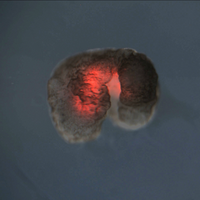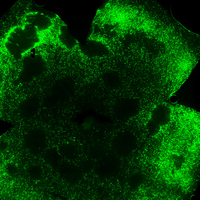Login
Subscribecell & molecular biology, genetics

How a Centipede Survives its Own Species’ Venom
Shawna Williams | Nov 1, 2020 | 2 min read
The same toxin targets different receptors in prey and conspecifics to deliver either a lethal or non-lethal blow.

Contributors
The Scientist | Sep 1, 2020 | 4 min read
Meet some of the people featured in the September 2020 issue of The Scientist.

Gene Splicing Pioneer Dale Kaiser Dies
Ashley Yeager | Jun 29, 2020 | 5 min read
Working with a virus that infects bacteria, the Stanford University biochemist and developmental biologist helped to develop a way to stitch DNA together, a discovery that gave rise to genetic engineering.

How a Pea Aphid Decides to Make Wings or Not
Viviane Callier | Jun 1, 2020 | 2 min read
Wing development in females is environmentally controlled, but in males, an insertion on the sex chromosome appears to dictate whether the insects grow wings, according to a study.

Infographic: How Does Cell Senescence Drive Aging and Disease?
Katarina Zimmer | Mar 1, 2020 | 4 min read
The accumulation of zombie-like cells seems to accelerate aging and promote aging-related disease. Researchers are trying to figure out how.

Algorithm Designs Robots Using Frog Cells
Emma Yasinski | Jan 13, 2020 | 3 min read
Scientists carve the shapes from piles of frog cells, like a sculptor building a statue.

Lottery Underway for Rare Muscle-Wasting Disease Gene Therapy
Lisa Winter | Jan 7, 2020 | 2 min read
The announcement by Novartis, the maker of Zolgensma, has drawn mixed reactions from the spinal muscular atrophy community.

Circulating Fetal Cells Sequenced for Prenatal Testing Study
Emily Makowski | Dec 10, 2019 | 3 min read
Trophoblasts, collected from the mother during a blood draw, can determine fetal genetic abnormalities currently diagnosed through amniocentesis or chorionic villi sampling.

Spaceflight Alters Genes of Human Stem Cell–Derived Heart Cells
Emily Makowski | Nov 7, 2019 | 3 min read
Cardiomyocytes made from iPSCs aboard the International Space Station had upregulated mitochondrial functioning.

NIH Announces Details of Human Fetal Tissue Research Restrictions
Ashley Yeager | Jul 29, 2019 | 2 min read
The latest restrictions require scientists to submit more comprehensive grant applications, and those applications will go through more stringent ethics reviews.

Robert Murphy Bets Self-Driving Instruments Will Crack Biology’s Mysteries
Shawna Williams | May 1, 2019 | 9 min read
The Carnegie Mellon computational biologist thinks machine learning algorithms can direct high-throughput experiments to solve the field’s unanswered questions.

Image of the Day: Cone Preservation
Chia-Yi Hou | Apr 30, 2019 | 1 min read
Researchers treat mice with retinitis pigmentosa using a gene therapy that reduces cone loss.

The Dark Matter of the Human Proteome
Annie Rathore | Apr 1, 2019 | 10 min read
Advances in the functional characterization of newly discovered microproteins hint at diverse roles in health and disease.

Some Viruses May Infect by Inserting Different Portions of Genetic Material
Emma Yasinski | Mar 18, 2019 | 3 min read
Viruses that infect plants and occasionally insects appear to cause infection with a divide-and-conquer strategy, multiplying separate segments of genetic material in different host cells.

Without This Enzyme, Insertions Thrive in the Yeast Genome
Katarina Zimmer | Mar 1, 2019 | 3 min read
A study underscores the importance of Dna2 in maintaining the integrity of the genetic code.

Infographic: How Stray DNA Can Land in Double-Strand Breaks
Katarina Zimmer | Mar 1, 2019 | 1 min read
A study on yeast illuminates how insertions may occur.

HeLa Cells from Different Labs Vary in Genetics, Phenotype
Katarina Zimmer | Feb 26, 2019 | 4 min read
This could account for some reproducibility problems in cell line research, according to the authors of a comprehensive analysis of HeLa variants.

A New Role for Yeast Introns: Helping Cells Cope Under Stress
Katarina Zimmer | Jan 16, 2019 | 4 min read
Two studies contest the idea that the noncoding sequences are just “junk DNA,” demonstrating that they play important roles in the regulation of cell growth.

Researchers Engineer Epigenome Editors to Study How Gene Expression Affects Disease
Ashley Yeager | Jan 1, 2019 | 7 min read
Using CRISPR and other tools, scientists are modifying DNA methylation, histone marks, and other modifiers of gene expression to understand how they affect health and disease.
